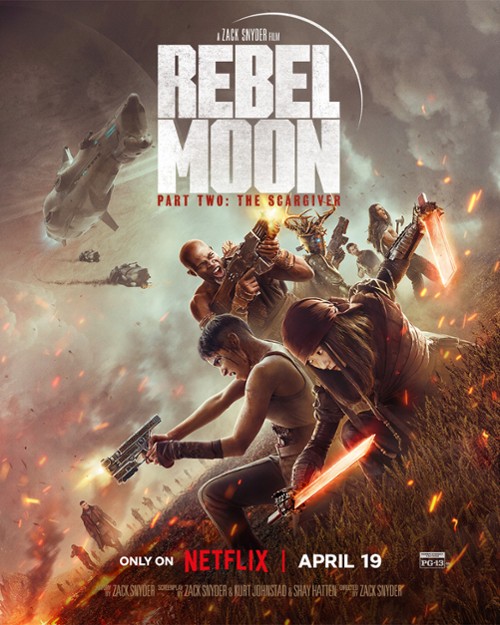Zack Snyder can be accused of many things, but he is not lacking in passion. Of course, the road to hell is paved with good intentions, but he would like to reach heaven. And he tries. Of course, he is far from a tragic figure, he is more like a donut in butter. Unfortunately, his constant attempts over the years to raise his private vision of cinema to the stars resemble fruitless, childish attempts to jump to the moon. Well, the legs are too short.
Snyder likes to surround himself with tons of cultural references, use complex contexts, paint images that are a kind of remixes of “Guernica” and space warriors leading the people to the barricades, and tell stories only in capital letters. But practically every work collapses under its own weight, implodes, unable to reach a deeper meaning. Only the gold remains.
It is no different in the show “Rebel Moon – Part 2: Inflicting Wounds”. The monumental diptych “Rebel Moon” brings together a multitude of associations and countless quotations from mythology, cinema and pop culture in general. However, when placed between microscopic slides, they are ruthlessly flattened. In other words, the epigonic net carefully woven by Snyder has meshes so fine that the film becomes paradoxically hermetic and inbred. It does not allow any original thought to pass through.
On the other hand, it is clearly the work of its creator, a thing assembled from puzzles cut out from the same template that he has been using for years, although only uncut corners remain. Snyder is inevitably reaching sixty, but he still shoots like he’s about to turn eighteen. And there is a certain charm in this youthful energy, undeniable charm, sincere joy and the desire to share your fun with others. Again – desire. Pure, yet empty. And somewhat egotistical.
You can try to distort reality, but the first episode of “Rebel Moon” – a four-hour film necessarily divided into halves – was, in the end, nothing more than a variation on the theme of “Star Wars”. Not cynical at all, but resulting from an otherwise quite correct belief in Campbell’s universality of the topoi he perpetuated. And also from the artistic need to design one’s own universe, to leave behind a legacy more lasting than the remains of a series of projects scattered here and there, necessarily unfinished, abandoned or canceled. It is possible that a similar fate awaits “Rebel Moon”, because Snyder has huge and far-reaching plans, and the corporation’s patience is measured only by the minutes spent in front of the screen by subscribers. But for now we can talk about a triumph, because it is something that has been years in the making, a dream come true for an eternal dreamer.
What was said about the first part can also be said about the second. However, there is little exposition – because even this is unnecessary – and a lot of action. In fact, “The Woman Who Causes Wounds” is practically a two-hour battle fresco painted with crayons, where the often impressive logistics of individual scenes and stunts are subordinated solely to the aesthetics of sometimes even a single frame. The next highlights are slow-motion portraits of figures frozen in model poses. Here is a display of unisex clothing set against the background of stories of redemption, revolution and martyrdom.
Shooting, kicking and slashing are interrupted only for a moment by illustrative dialogues and short, obligatory flashbacks, intended to bring us closer to the stories of those characters from Kora’s camp (Sofia Boutella), whose motivation has so far been either silent or only timidly whispered. . Let’s repeat: Snyder is only interested in arranging subsequent flashy battle sequences, as if now, finally, no longer having to focus on world building, he could let go of the reins. That’s why the characters themselves, no matter how important they may have been, disappear behind clouds of dust, drowned out by the constant explosions.
However, the last, fat beats of the “Seven Samurai” remix resound loudly, when previously defenseless farmers resist the invader, motivated by the heroism of those who came to help them – not for profit, but because it is necessary. For the defenders of the god of the guilty spirit of the moon drifting somewhere in the cosmic province, it is also a chance to atone for their sins, a guarantee of calming their consciences, and of becoming heroes in their own hearts.
Of course, this quarrel will spread to the entire universe invented by Snyder, unless the money tap is turned off. We boldly leave unsaid things here, and new cards are revealed at the races, old characters return and new ones appear, but there is a lot of lies in it, constructing a multi-story illusion that there is something more to it all, that we are dealing with a master of ceremonies planning intrigues like Charlie Day at a corkboard on a popular meme. Except it’s all just a straight line connecting two points – Zack and Snyder.


